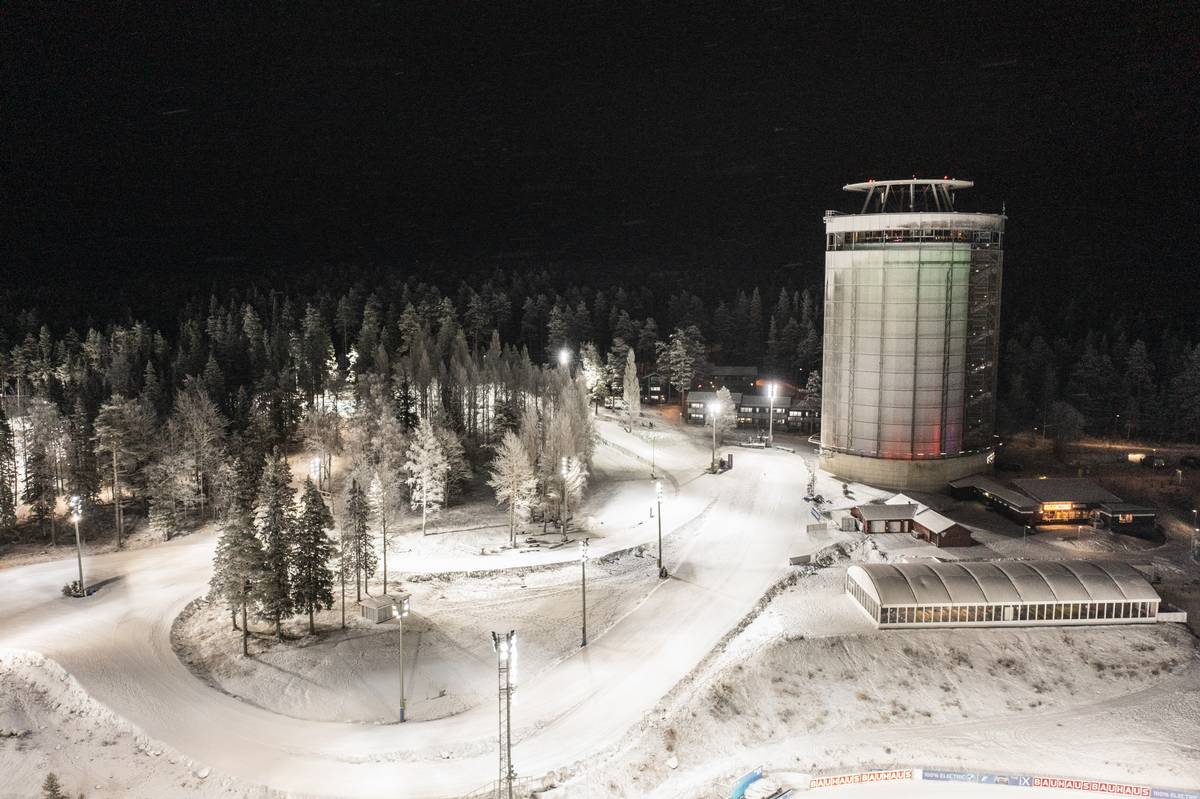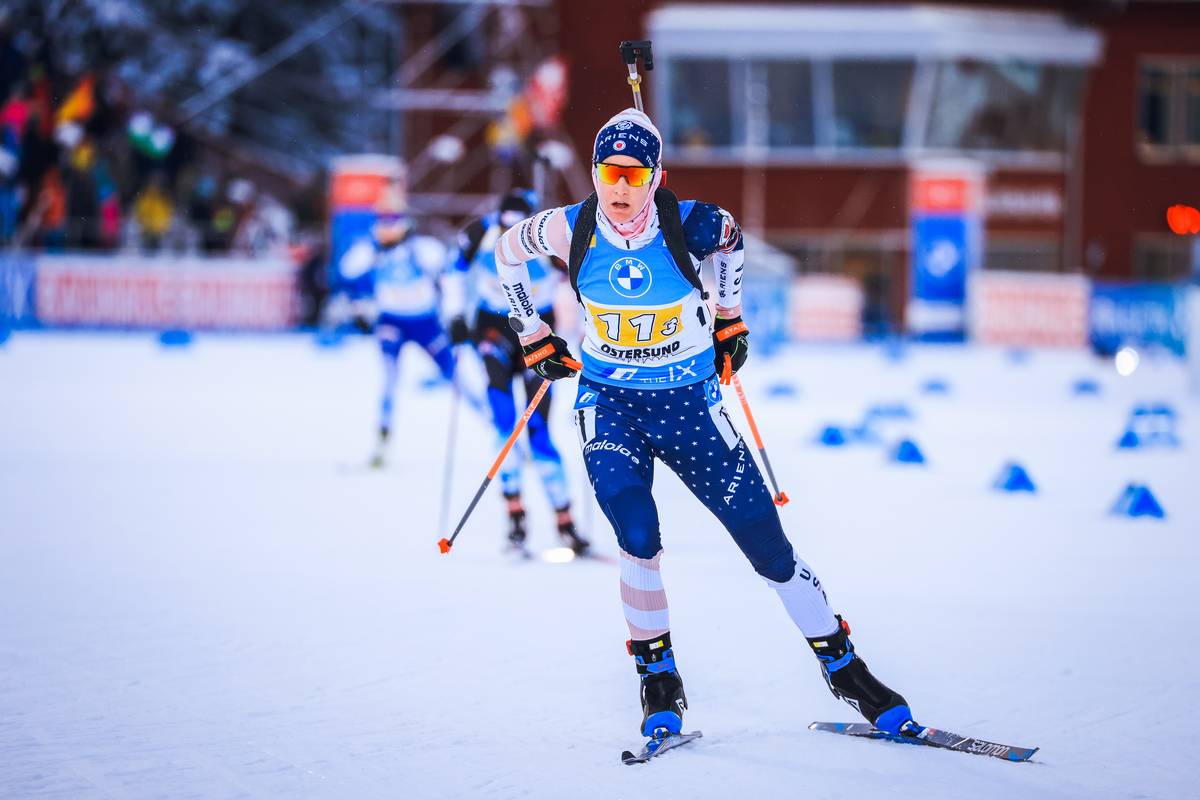
The sport’s governing body joins a UN campaign to fight climate change, and save Biathlon too.
***
Östersund, Sweden markets itself as Vinterstaden (The Winter City), a reputation it earned a century ago when the Nordic Games – the precursor to our modern Winter Olympics – were moved there from snowless Stockholm in 1905 and 1913. The International Biathlon Union (IBU) routinely puts Östersund at the very beginning of its world cup calendar, as it did this year (starting Nov. 26th).
At a time when watching the world’s best compete on a ribbon of white against a backdrop of brown and green has become all-too-common, the IBU puts its faith in Östersund to have natural snow and have it early. Östersund this season, however, was covered in just a dusting in early November, with mixed precipitation in the forecast. Weather models predicted that the venue would probably have snow when the World Cup came to town – probably.
That qualifier is new for Östersund, and with attention already focused on the massive snowmaking operation required for next February’s Olympics in Beijing, the 2021-2022 Biathlon calendar is marked all the way through with a reality that the winter climate the sport relies upon is changing. And in response to that change, the IBU has decided to make a change too.
On November 3rd, the IBU announced that it has joined the UN’s Race to Zero climate campaign. In doing so, it joined forty-six other signatories including the International Olympic Committee, and becomes the first international winter sports governing body to meet the UN’s strictest criteria for non-state actors to fight climate change.
The Race to Zero campaign is part of the UN’s strategy to meet the Paris Agreement’s goal to halve global emissions by 2030 and limit global warming to 1.5 degrees centigrade. The IBU’s commitment is part of the UN’s Sports for Climate Action program, which hopes to spur sports organizations to act as leaders in the “climate neutrality journey.” The list of signatories to the program’s non-binding pledge of sustainability is long, ranging from global brands such as the English Premier League to local races you may find outside your backdoor like Grandma’s Marathon in Duluth.
To join the Race to Zero the IBU was required to develop a specific plan and reporting process to reach 50% reduction in Greenhouse gas (GHG) emissions by 2030, and eliminate GHG emissions by 2050 (defined as “Climate Positive”). This includes requirements to plan, meet certain time intervals to act on that plan, and report publicly.
Joining the UN’s campaign builds upon the IBU’s pre-existing sustainability strategy – with the sport staking its very existence on limiting climate change. The strategy, adopted in 2019, calls for even faster action than the UN, looking “to become climate neutral by 2030, and climate positive by 2034,” beating the UN’s timeline by sixteen years.

So how does the IBU plan to get there? Their sustainability strategy addresses topics that have joined technique talk and tales of past racing glory as common water cooler talk for those of us in the Nordic community the last few years. Eliminating fluorocarbons, and the persistent PFAs they’re known to leech into the snow, is a top priority. The largest change comes from the largest source of GHG’s though – the emissions from travel and transport of an entire circuit of athletes, coaches, media, wax technicians, and fans – around Europe and the world.
To address this, the IBU is implementing a carbon management program that pairs two points of emissions; 1) the IBU’s own infrastructure and 2) the venues the IBU uses for world cups.
Starting this season, the IBU is starting to convert their fleet of vehicles to electric and partnering with world cup venues to make sure that their energy and waste disposal systems are not contributing GHG’s to the atmosphere. In the short-term the IBU is investing in carbon offsets for any venues that can’t immediately meet zero emissions requirements, but will need to convert outright by 2030 to meet the “no offsets” requirement of the Race to Zero.
Biathlon is a sport born of innovation, its very existence the pairing of an ancient mode of transportation with the weaponry of an industrial age. To survive in a time of climate crisis, it’s staked itself on constructing a strategy with the same thoughtful action it takes to slow one’s heart in the flash of a moment. When it heads to the north of Sweden in a few weeks to begin a new season full of hope in a place that defines itself as a season – Vinterstaden – it will come armed not only with a .22 on the back of its athletes, but a plan to hit the targets that will allow it to exist as a sport in a world that’s sustainable for all – from Europe to Beijing, and back here in North America too.

Ben Theyerl
Ben Theyerl was born into a family now three-generations into nordic ski racing in the US. He grew up skiing for Chippewa Valley Nordic in his native Eau Claire, Wisconsin, before spending four years racing for Colby College in Maine. He currently mixes writing and skiing while based out of Crested Butte, CO, where he coaches the best group of high schoolers one could hope to find.



